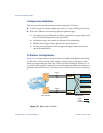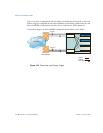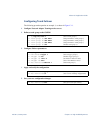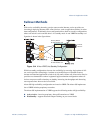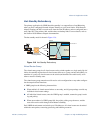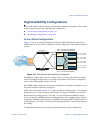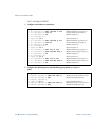
Alteon OS Application Guide
Chapter 13: High Availability
22742C4911, January 2007
Failover Methods
With service availability becoming a major concern on the Internet, service providers are
increasingly deploying Internet traffic control devices, such as application switches, in redun-
dant configurations. Traditionally, these configurations have been hot-standby configurations,
where one switch is active and the other is in a standby mode. A non-VRRP hot-standby con-
figuration is shown in the figure below:
Figure 13-4 A Non-VRRP, Hot-Standby Configuration
While hot-standby configurations increase site availability by removing single points-of-fail-
ure, service providers increasingly view them as an inefficient use of network resources
because one functional application switch sits by idly until a failure calls it into action. Service
providers now demand that vendors' equipment support redundant configurations where all
devices can process traffic when they are healthy, increasing site throughput and decreasing
user response times when no device has failed.
Alteon OS high availability configurations are based on VRRP. The Alteon OS implementa-
tion of VRRP includes proprietary extensions.
The Alteon OS implementation of VRRP supports the following modes of high availability:
Active-Active—based on proprietary Alteon OS extensions to VRRP
Hot-Standby—supports Network Adapter Teaming on your server blades
Primary Switch
IP: 200.200.200.100
Secondary Switch
IP: 200.200.200.101
Interne
t
Server
s




